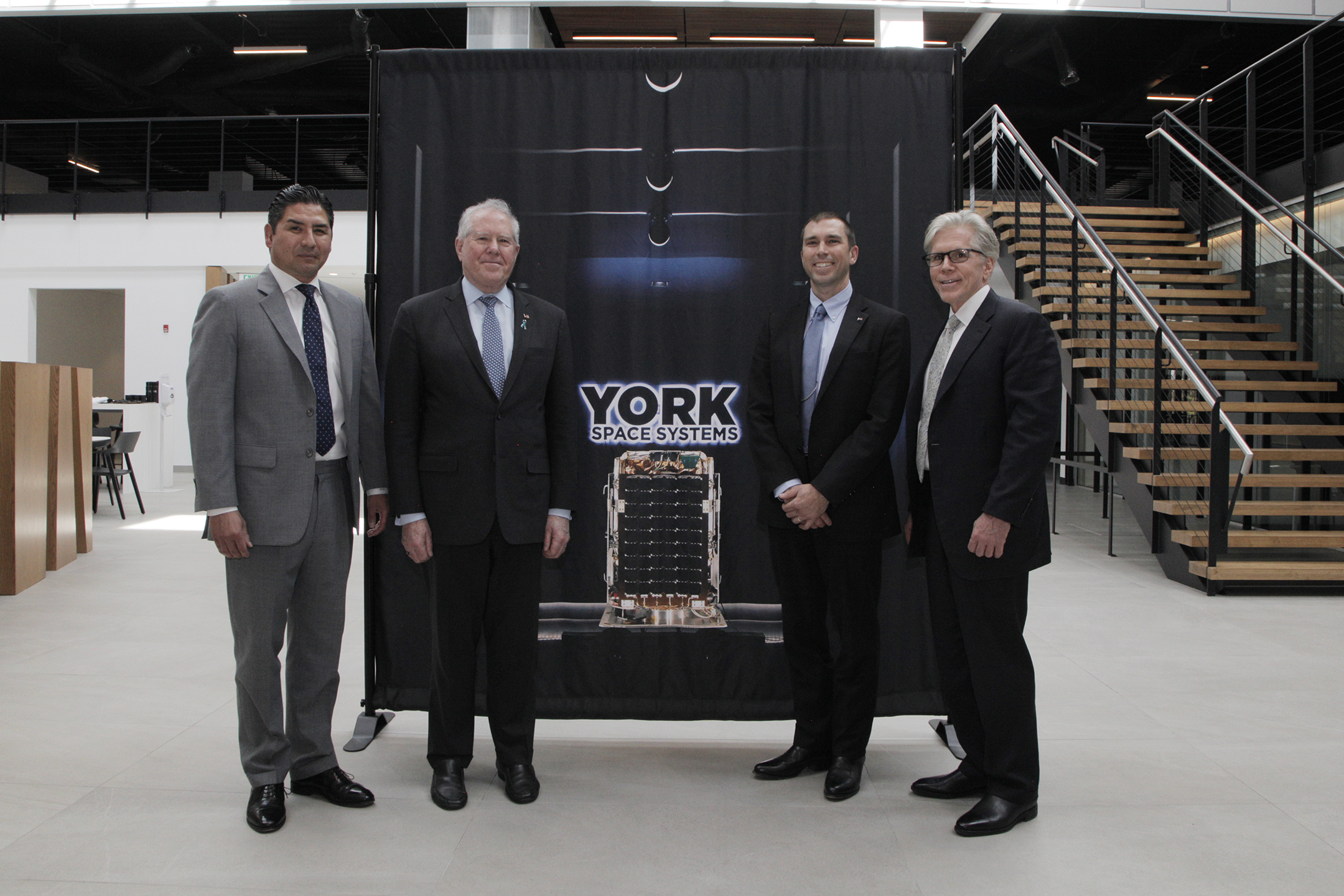York Space’s satellites will need filters to address a ‘noisy power supply’ issue
WASHINGTON — The first launch of the Space Development Agency’s constellation planned for mid-December will slip to March 2023 due to an anomaly in York Space’s satellites that was identified during tests, the agency’s director Derek Tournear said Dec. 9.
The Space Development Agency, a procurement organization under the U.S. Space Force, is working with multiple vendors to build a mesh network in low Earth orbit that includes data-transport communications satellites and infrared sensor satellites that detect and track missiles in flight.
York Space Systems, based in Denver, Colorado, won a $94 million contract in August 2020 to build 10 satellites for SDA’s Transport Layer Tranche 0.
The first Tranche 0 launch was originally planned for September and pushed to December due to supply chain problems across all vendors in the program. Tournear said the latest delay resulted from a “noisy power supply” issue that requires a fix for all eight York satellites that were manifested to launch in December.
“Technical issues came up during testing … we had a noisy power supply,” Tournear told SpaceNews. “We have to take the satellites apart and add in an electrical filter to all the York satellites.”
A noisy power supply, meaning that it generates a lot of electrical noise, can interfere with the satellite’s performance. York and SDA engineers agreed the solution is to add a filter. Getting all the satellites retrofitted with filters, reassembled and tested will take approximately three months, Tournear said.
York Space will absorb the cost as they were purchased under a fixed-price contract. Tournear said the government may have to bear “some small nominal costs” for rescheduling the launch but is not paying for the satellite fixes.
The launch rescheduled for March includes York’s eight satellites and two of four SpaceX-Leidos missile-tracking satellites the companies are building for SDA’s Tracking Layer Tranche 0.
Tranche 0 also includes 10 Transport Layer satellites made by Lockheed Martin and four Tracking Layer satellites made by L3Harris.
Second Tranche 0 launch pushed to June
SDA had planned its second Tranche 0 launch — with Lockheed Martin’s and L3Harris’ satellites — in March, but this mission is now being pushed to no earlier than June as SDA needs at least three months between launches to perform the necessary orbit raising maneuvers, testing and checkout, said Tournear.
“Our plan now is to launch 10 satellites in March and the remaining 18 in June,” he said. Both launches will be on SpaceX Falcon 9 vehicles from Vandenberg Space Force Base, California.
Charles Beames, executive chairman of York Space Systems, told SpaceNews that the noisy power issue came up during the most recent tests but had not come up in earlier design reviews. He said the addition of the filter is a relatively minor expense and does not require a major rebuild of the satellites.
Tournear said these setbacks are to be expected and SDA remains confident it can deploy its constellation at a pace that is much faster than traditional military programs.
After both Tranche 0 launches are completed next year, the next target is the launch of the Transport Layer Tranche 1. York Space, Lockheed Martin and Northrop Grumman are each building 42 satellites projected to launch in September 2024.
“We are absolutely not going to back off our ambitious schedule targets,” Tournear said. The goal for Tranche 1 and beyond remains 30 months from contract award to launch.
